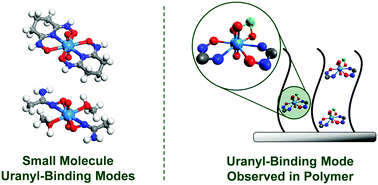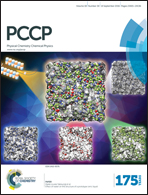A report on emergent uranyl binding phenomena by an amidoxime phosphonic acid co-polymer†
Abstract
The development of technology to harvest the uranium dissolved in seawater would enable access to vast quantities of this critical metal for nuclear power generation. Amidoxime polymers are the most promising platforms for achieving this separation, yet the design of advanced adsorbents is hindered by uncertainty regarding the uranium binding mode. In this work we use XAFS to investigate the uranium coordination environment in an amidoxime–phosphonic acid copolymer adsorbent. In contrast to the binding mode predicted computationally and from small molecule studies, a cooperative chelating model is favoured, attributable to emergent behavior resulting from inclusion of amidoxime in the polymer. Samples exposed to seawater also display a feature consistent with a μ2-oxo-bridged transition metal, suggesting the formation of an in situ specific binding site. These findings challenge long held assumptions and provide new opportunities for the design of advanced adsorbent materials.



 Please wait while we load your content...
Please wait while we load your content...